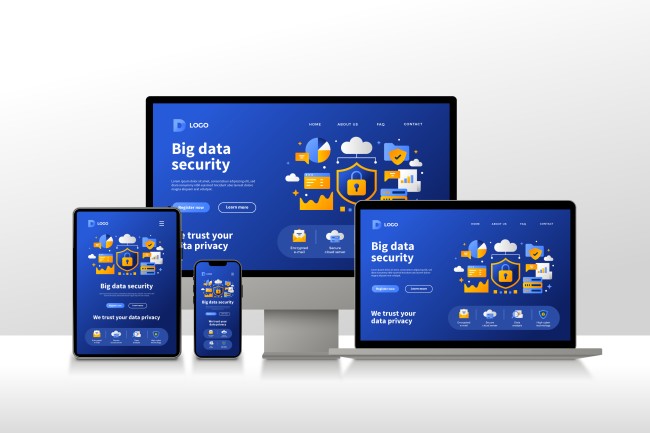
With the rapid use of various devices such as smartphones, tablets, and laptops, a website with responsive features, which can fit into any size of the screen, is the need of the hour.
Here comes responsive design, which helps the websites adjust to any size of the screen and optimally visible on different devices. Here in this article we will discuss why responsive design is important, and some best practices for implementation.
The Importance of Responsive Design
However, when your website or application is beautifully responsive, that means one thing above all: usability. A responsive design will adapt to screen size and orientation for the best experience in use of any device it may be viewed on. Below are all the additional benefits that design offers:
- Improved User Experience: Responsive design ensures that your content is delivered without zooming or excessive scrolling. Your website becomes more usable, intuitive, and friendly for the user, making it adaptable to a user’s device.
- Better SEO Rankings: Responsive sites rank better in search results because they provide a better user experience. Moreover, Google is in favour of mobile-friendly websites; therefore, responsive design will enhance your SEO efforts.
- Improved Conversion Rates: If your users find it easy to navigate through your website and complete actions with ease on any device, then they are going to convert at a higher rate. Whether it is clicks, sales, or sign-ups, a responsive design forms the crux of your conversion goals.
Understanding Different Devices
If you want to design for different devices in the most efficient way, you have to have a very good understanding of those devices. The screen size, resolution, and capability of devices are pretty different from each other and can make your design look and function very differently.
So, a design that functions perfectly on a desktop screen may not be exactly the same when it’s taken to a smaller mobile device. So, before designing for multiple devices, it is important to research and analyze the devices that you are targeting so you can tailor your design according to the specifications.
- Smartphones: Almost every smartphone user uses their phone for a myriad of things—from checking email to shopping online. That means your design should not only be readable on this medium but also easily navigable for those using touch interfaces.
- Tablets: With their wide range of sizes and functions, tablets represent the ‘in-between’ devices that demand great design consideration. Their unique use case for leisure and work means that your content should be comfortably navigable through both touch and keyboard interactions.
- Desktops: The more ‘traditional’ of the three, desktops demand the most in the design perspective. Big screens offer ample space to show content, but the design should be scalable and flexible.
Best Practices for Creating Responsive Designs
When developing a responsive design, it is important to remember that resizing a design from a larger screen down or from a smaller screen up will not completely help one attain the necessary responsive design.
Rather, responsive design requires a critical process of adoption to make sure the design appears and functions optimally on different devices and across all screen sizes. This includes consideration of layout, font, images, and navigation that might need adjusting to bring about consistency and seamlessness to the user experience regardless of the device used.
- Use Flexible Grids: Using a flexible grid layout, like percentages, will allow your design elements to adapt dynamically based on screen size, while keeping proportions and readability intact.
- Implement Media Queries: Media queries are your magic wand for designing a layout, which can respond to different conditions and breakpoints in a device’s screen size.
- Optimize Images: Normally, images are quite heavy elements on a webpage, which can slow downloading on mobile devices. Employ techniques to serve appropriately sized images to users’ devices—this will help improve performance without sacrificing quality.
Tools and Resources for Responsive Design
Here are some of the tools and resources you can use to make the responsive design process easier and more enjoyable.
- Frameworks and Libraries: Make use of popular CSS frameworks like Bootstrap or Foundation to jumpstart your responsive designs with pre-built grids and components.
- Responsive Testing Tools: Tools such as Chrome’s DevTools, and services like BrowserStack, make it possible for you to emulate a bunch of devices to see how your design responds to each.
- Online Learning and Courses: Stay up-to-date with the latest in responsive design from many resources such as online courses, webinars, and e-books dedicated to this field.
- Future of Responsive Design: Responsive design isn’t exactly a trend; it’s the present and the future. With new tech coming into the horizon, what’s next for responsive design tomorrow?
Accessibility, responsiveness, and inclusivity are the future’s web. The emphasis will be more on including everyone, regardless of ability, or the device one uses to make sure access and enjoyment are everywhere.
Conclusion:
Responsive design is about meeting your audience where they are—in the devices they use. This is future-proofing your content against an unknown number of possible screen sizes, devices, and use cases.
If you need a great responsive design for your website, don’t hesitate to contact skilled web development professionals at Red C.
